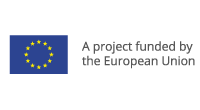Climate & Energy Framework
Key achievements
Much has been achieved since the EU adopted its first package of climate and energy measures in 2008. The EU reduced greenhouse gas ( GHG ) emissions by around 18% compared to 1990 levels and is now well on track to meet the 2020 target of 20%.
The EU installed about 44% of the world's renewable energy capacity amounting to 13% of gross final energy consumed in the Union. It also reduced the energy intensity of the economy by around a quarter in the period 1990-2010 thanks to improving use of energy in buildings, products, industrial processes and vehicles and through the fact that industry improved its energy efficiency by 30%.
These achievements are the more significant given that the European economy has grown by around 45% in real terms. The 20/20/20 targets for greenhouse gas emissions, renewable energy and energy savings have played a key role in driving this progress and sustaining the 3 or so million people employed in various eco-industries.
Main changes
Several important things have changed since 2008. The most obvious is the impact of the economic and financial crisis. Fossil fuel prices remain high which negatively affects the Union's trade balance and energy costs. In 2012, the EU's oil and gas import bill amounted to more than €400 billion or approximately 3.2% of the Union's GDP . The internal energy market has developed but new risks of fragmentation have emerged.
There is also a growing perception that the EU's Emissions Trading System is not driving sufficiently investments in low-carbon technologies and the rapid development of renewable energy sources poses new challenges for the energy system. Moreover, there is the need to make an ambitious commitment to the policy framework needed for 2030 and make further greenhouse gas emission reductions in line with the cost-effective pathway described in the “2050 roadmaps”.
The 2030 Framework
The Commission proposed to provide regulatory certainty as early as possible for investors in low-carbon technologies spurring research, development and innovation and up-scaling and industrialisation of supply chains for new technologies. This must all be done in a way which takes account of the prevailing economic and political realities and builds on our experience of the current policy framework.
The European Commission also proposed a GHG target of 40% binding at EU and Member States level, i.e. a domestic target. The proposals will set out plans for an EU-wide target of 40% GHG emission reduction and a 27% for renewables by 2030. The new governance system for the 2030 framework will require Member States to establish national plans for competitive, secure and sustainable energy – including the level of ambition for renewable energy. The collective aim of these plans is to create more investor certainty, greater transparency while enhancing coherence, EU coordination and surveillance.
The 2030 Climate and Energy Policy Framework was approved by the European Council of 23 & 24 October 2014.
Key links
The 2020 climate and energy package
The 2030 framework for climate and energy policies
Roadmap for moving to a low-carbon economy in 2050
European Council (23&24 October 2014) Conclusions on 2030 Climate and Energy Policy Framework



